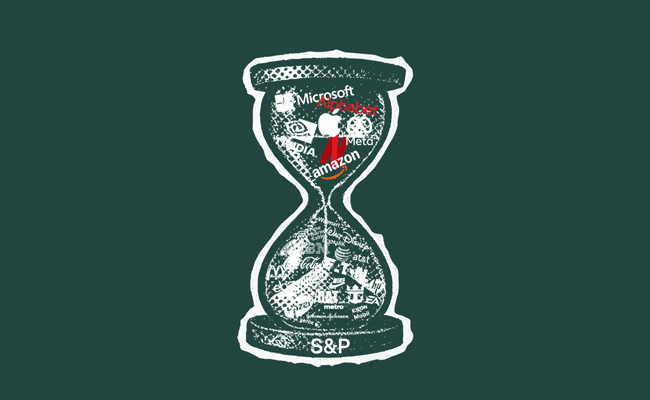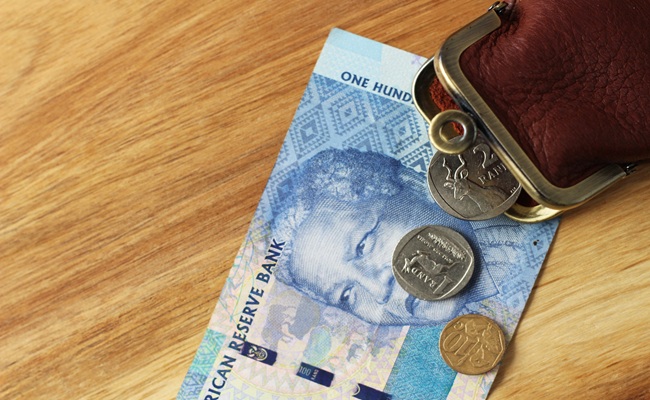There’s nothing humans love more than a round number. Particularly when it’s followed by a few zeros. So cue the bomb emojis on X, memes galore (hello Superman in your 100,000 costume!) and a general frisson of excitement in fintwit camps countrywide yesterday.
The JSE’s all share index closed at 100,179 points on Wednesday. Having reached 10,000 in December 2001, it means the local market has given investors a return of 10.3% per year since. And with a bit of luck, says Protea Capital’s Jean Pierre Verster, “1,000,000 will be reached in 20 to 25 years from now – what a party that will be!”
Sarcasm aside, the JSE’s run this year – it’s gained about 18% to date – is still a major achievement if you consider how weak our economy is. Or maybe not. Ever the pin in one’s overexcitable balloon, Verster points out that the stock market “is not the economy. If you see where the money is made from the companies listed on our local stock exchange, most of the profits generated are outside of South Africa.”
Think companies like Richemont, Bidcorp, AB InBev and Naspers. The JSE’s top 40 index has a distinctly global flavour, not to mention a big commodities component. And within that its gold and platinum miners have been this year’s heavy lifters.
The top performer in the top 40 shares on the JSE is gold and platinum miner Sibanye-Stillwater, which has surged more than 170% this year. Northam Platinum is up 129%, AngloGold has rallied 113% and Impala Platinum has gained 102%.
Thank goodness, says Sanlam portfolio manager Roy Mutooni, that we are catching a metals wave that doesn’t rely on our railways.
“When it’s precious metals that are high value, low-mass that are rallying, then we naturally would do well. We’re the world’s biggest producer of PGMs [platinum group metals] and we still produce some gold. And it’s the best we’ve ever seen, pretty much, for gold, with volumes growing. I guess the irony is that when we say 100,000 you’d think it includes our industrials and banks but they’re not there.”
In fact, one of the worst performers on the JSE’s top 40 index this year is Aspen, which has lost 29%. It’s followed by Mr Price, Woolworths, Nedbank, Shoprite, Pepkor, Bidvest, Absa and Clicks. SA Inc, in a nutshell – right at the bottom of the top 40 table.
As Verster says: “Even though our market is in rude health, it doesn’t mean our economy is too.”
Still, it’s a timely reminder that the JSE gives investors plenty of offshore exposure without having to necessarily seek out other markets, though the South African market is distinctly lacking in the kinds of companies that have dominated the gains on world markets in the past two years.
Says Mutooni: “What’s really rallied offshore has been a combination of pharma and these big platform stocks (like Alphabet or Nvidia or Microsoft). The only platform stock we have access to is Tencent. So it makes sense from a diversification perspective and access to opportunity to take your money out, but also acknowledge that the money that you make here is not unduly concentrated in an economy that’s not growing.”
So: be invested locally, but don’t put all your money here.
Looking forward
The question now is what’s next. Especially in light of the increasing animosity between South Africa and the US.
As Currency reported on Monday, a scathing opinion piece in the Wall Street Journal this past weekend urged Wall Street to reconsider the risks of investing in South Africa, given our parlous standing with the US. On Tuesday this standing appeared to take a turn for the worse – just ahead of Donald Trump’s tariff deadline – with Republican congressman Ronny Jackson introducing the “US-South Africa Bilateral Relations Act of 2025”, which mandates a full assessment of bilateral ties between our countries – and the prospect of sanctions against certain ANC members.
What would that mean for the stock market?
Given how internationally focused many of the companies on our exchange are, perhaps not much. Especially those that have carried us aloft this year.
“The gold miners dig most of their gold out of the ground in other places. Yes, Harmony has significant South African gold mines and Gold Fields has South Deep but all the others, their mines are in the rest of Africa and Australia,” says Verster.
As for PGM producers, the two countries in the world responsible for almost all supply are South Africa – and Russia. “I don’t expect the US to put major tariffs on PGM metals because that is really shooting themselves in the foot. PGMs are used quite widely in all kinds of applications so the US would want to maintain access and it’s tricky to get access via Russia,” says Verster.
Mutooni is fairly sanguine, too. “What has the Trump administration done? It’s cut all ties with South Africa and they’ve just gone in their own direction. If what we’re supposed to be afraid of is sanctions against individuals, I mean, Julius Malema can’t go to the UK already – has that bothered anyone? No.”
Of course, the loss of tariff-free access to the US is no small matter for our car and agriculture industries, or the people they employ. But as Mutooni points out, “car exports to the US fell by 97% last month. But total car exports out of South Africa grew 3% – so these guys have been able to replace that market. We can sit here and wring our hands and wonder what we can do to make the US happy – it doesn’t make a difference.”
And anyway, agriculture, wine, citrus and motor vehicles are minimally represented on the JSE.
Changing lanes
For old-timer David Shapiro, there’s a sweet symmetry in this latest milestone. “When I started in the market in 1972 we were the resource capital of the world, so when we reach this magic mark I’m so pleased it’s been resources pushing us over the line.”
Ever the perma-bull, Shapiro is convinced that the JSE’s gains are part of a next leg up in markets which he argues is set to be unleashed by lower interest rates. That’s beside the investments that will need to accompany the world’s thirst for AI. Think of everything that might be used to build data centres, for example.
“There are two elements: the slow lane and the fast lane,” he explains. The slow lane is the drag that has come since the end of 2021 when US Federal Reserve governor Jerome Powell admitted inflation wasn’t transitory, and hiked interest rates by 5.5%.
“That was a major shock and we still haven’t recovered from that. The other lane, the fast lane, happened in 2022 with the arrival of ChatGPT. That helped us overtake the slow lane if I can continue with this lousy analogy. That’s going to continue. But what’s happening now is that the other lane is starting to kick into gear.”
Consider that about 40% of the S&P 500’s entire value of $53-trillion is to be found in its top 10 companies, whose combined value is about $20-trillion. “It gives you an idea of the power of those businesses, and they are not going to give it up. And all their spending has released an enormous amount of activity,” argues Shapiro.
For RECM chair Piet Viljoen, the financial conditions for emerging markets especially are healthy. “Money flows globally are starting to flow to emerging markets. And South Africa will benefit,” he tells Currency.
“Overarching this all, why this country is where we are today, is due to a government that does not trust the invisible hand of the market to allocate resources. But I think they are coming to the end of the line. International pressure, such as you’ve seen from Trump is overwhelmingly positive, but what’s priced into SA Inc assets is a continuation of the status quo.”
In other words, there’s a free option on an improvement in SA’s economic trajectory. “If it doesn’t happen you’re not going to see a lot of downside in these stocks, but if it does happen then you’ll see tremendous upside.”
So, 150,000, here we come?
This article was produced in partnership with Stanlib.
Sign up to Currency’s weekly newsletters to receive your own bulletin of weekday news and weekend treats. Register here.











